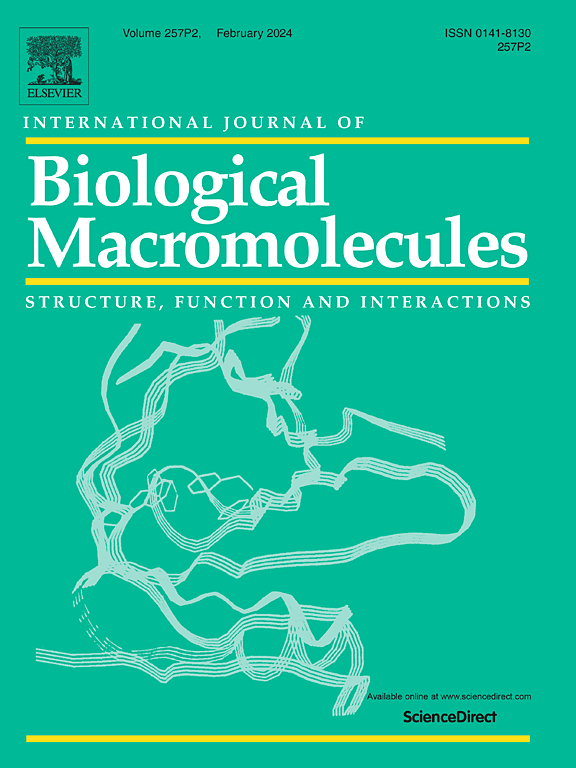Green synthesis of hawthorn polysaccharide-stabilized Pd@Ru nanozymes for sensitive colorimetric detection of organophosphorus pesticides
IF 8.5
1区 化学
Q1 BIOCHEMISTRY & MOLECULAR BIOLOGY
International Journal of Biological Macromolecules
Pub Date : 2025-09-19
DOI:10.1016/j.ijbiomac.2025.147780
引用次数: 0
Abstract
Organophosphorus pesticides (OPs) pose a significant threat to food safety due to their high toxicity and tendency to bioaccumulate. Conventional detection methods are constrained by reliance on specialized equipment and complex procedures, hindering rapid, on-site screening. In this study, a green synthesis approach was employed using hawthorn polysaccharide (HP) as a natural stabilizer to fabricate bimetallic Pd@Ru nanozymes (HP-PdmRun NPs). The synergistic effect between palladium and ruthenium markedly enhanced the nanozymes' peroxidase-like catalytic activity and stability. Their catalytic behavior followed typical Michaelis–Menten kinetics, exhibiting a strong affinity for the substrate 3,3′,5,5′-tetramethylbenzidine (TMB). A colorimetric biosensor based on HP-Pd10Ru20 NPs enabled rapid and sensitive detection of glyphosate, with a detection limit as low as 0.179 ng/mL and a linear range of 0.0002–200 μg/mL. The biosensor demonstrated excellent selectivity and recovery, offering promising potential for bioanalytical applications and contributing to the development of environmentally friendly, cost-effective technologies for detecting OPs residues.

绿色合成山楂多糖稳定Pd@Ru纳米酶用于有机磷农药的灵敏比色检测
有机磷农药具有高毒性和生物蓄积性,对食品安全构成严重威胁。传统的检测方法受到依赖专门设备和复杂程序的限制,妨碍了快速的现场筛查。本研究以山楂多糖(HP)为天然稳定剂,采用绿色合成方法制备双金属Pd@Ru纳米酶(HP- pdmrun NPs)。钯和钌的协同作用显著增强了纳米酶的过氧化物酶样催化活性和稳定性。它们的催化行为符合典型的Michaelis-Menten动力学,对底物3,3 ',5,5 ' -四甲基联苯胺(TMB)具有很强的亲和力。基于HP-Pd10Ru20 NPs的比色生物传感器能够快速灵敏地检测草甘膦,检出限低至0.179 ng/mL,线性范围为0.0002 ~ 200 μg/mL。该传感器表现出良好的选择性和回收率,为生物分析应用提供了良好的潜力,并有助于开发环境友好、成本效益高的OPs残留检测技术。
本文章由计算机程序翻译,如有差异,请以英文原文为准。
求助全文
约1分钟内获得全文
求助全文
来源期刊
CiteScore
13.70
自引率
9.80%
发文量
2728
审稿时长
64 days
期刊介绍:
The International Journal of Biological Macromolecules is a well-established international journal dedicated to research on the chemical and biological aspects of natural macromolecules. Focusing on proteins, macromolecular carbohydrates, glycoproteins, proteoglycans, lignins, biological poly-acids, and nucleic acids, the journal presents the latest findings in molecular structure, properties, biological activities, interactions, modifications, and functional properties. Papers must offer new and novel insights, encompassing related model systems, structural conformational studies, theoretical developments, and analytical techniques. Each paper is required to primarily focus on at least one named biological macromolecule, reflected in the title, abstract, and text.

 求助内容:
求助内容: 应助结果提醒方式:
应助结果提醒方式:


